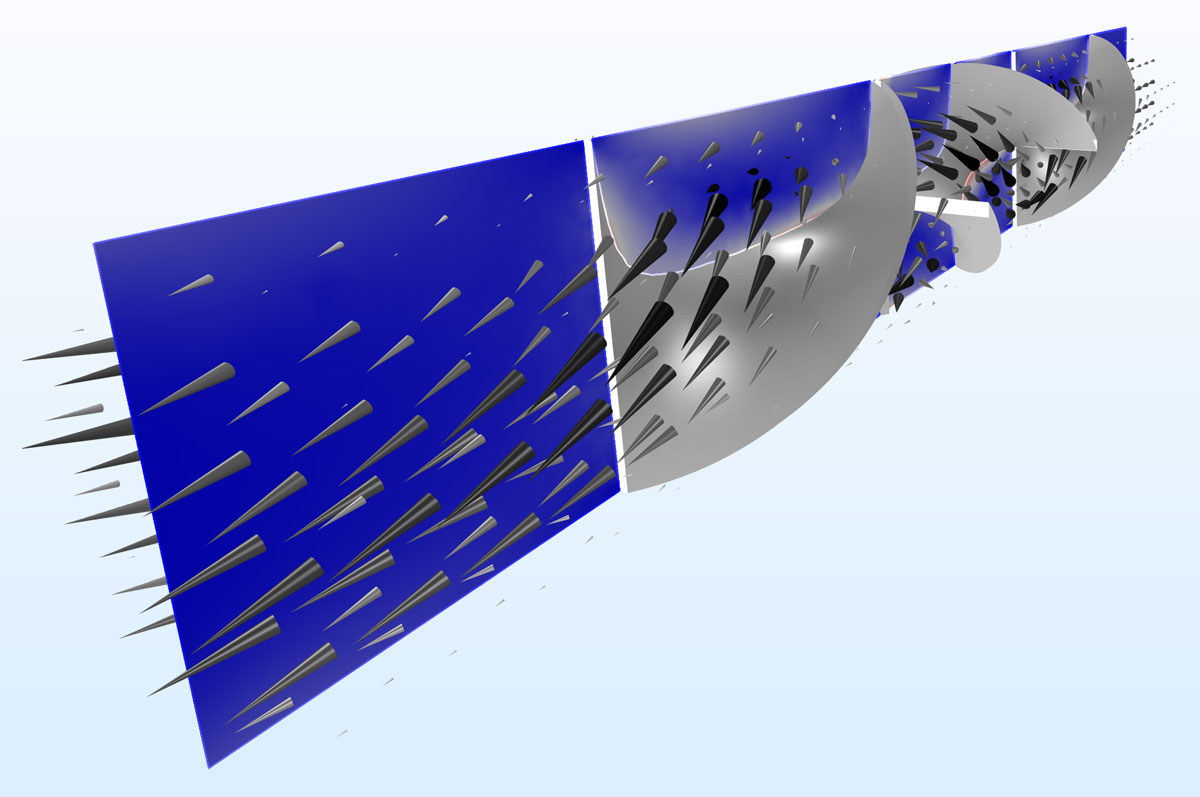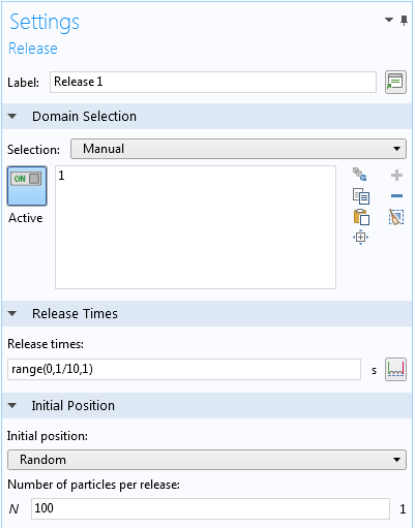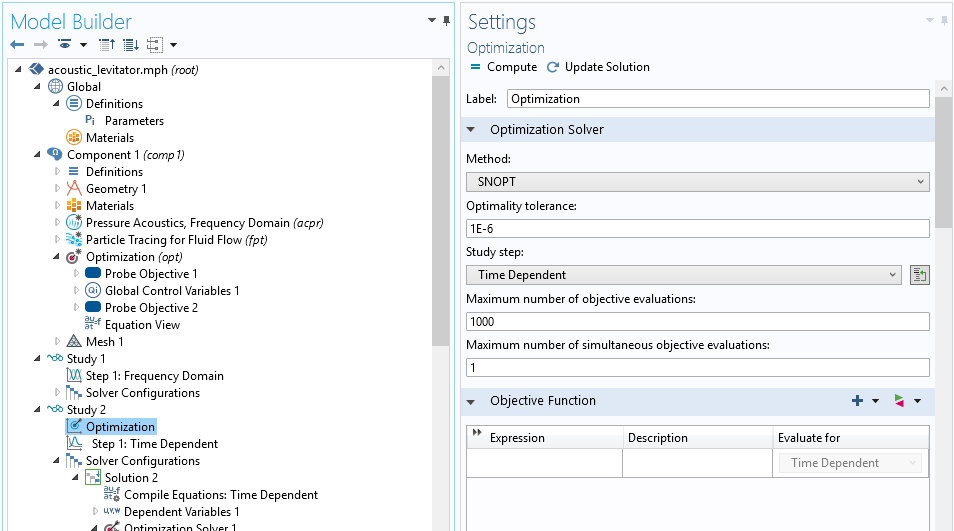

- PARTICLE TRACING FOR FLUID FLOW COMSOL 5.3 VIDEO HOW TO
- PARTICLE TRACING FOR FLUID FLOW COMSOL 5.3 VIDEO SOFTWARE

To show how the particle inertia affects the distribution of particles downstream in the channel, a Parametric Sweep is run over six different values of the Stokes number.

Particles of sufficiently high inertia tend to cluster close to the wall because of their ability to cross between different eddies in the flow. This example shows how inhomogeneous, isotropic turbulence in the wall region affects the particle motion. The CRW model perturbs the drag force on the particles in random directions based on the turbulent kinetic energy and turbulent dissipation rate of the fluid. To couple such a flow field to the particle tracing simulation and still account for turbulent dispersion, a continuous random walk (CRW) model is used. The fluid velocity is computed using a Reynolds-Averaged Navier-Stokes (RANS) model and, as a result, the individual eddies of the flow are not explicitly modeled. This tutorial model demonstrates some of the phenomena that occur when particles move through a turbulent channel flow. New Benchmark Model: Particle Dispersion in a Turbulent Channel Flow For users of the Particle Tracing Module, COMSOL Multiphysics version 5.3 includes many new features, highlighted by the Periodic Condition and Rotating Frame features for particle tracing in sectors and rotating machinery, respectively. A range of inlet and outlet flow velocities was simulated to find the best balance between the velocity of the feed flow across the microsieve (V y) and the velocity of the fluid flowing through pores of 50 µm (V x). Alternatively, use the Thermal Re-Emission wall condition to model molecules that get adsorbed at the boundary and then immediately reemitted into the domain with different speeds based on the surface temperature.įrom left to right: Hexapolar grids containing two, five, and ten rings of points. A cross-flow microsieve (CFM) module was numerically simulated in 2D, with COMSOL 5.3. Use the Thermal velocity distribution, available with the Inlet feature, to sample released particle speeds from the distribution. Two variants of this feature are available. Unlike other available particle-wall interactions, such as the diffuse or specular reflection, the new Thermal Re-Emission boundary condition samples the particle speed from a distribution, not just the direction of the velocity vector. You can now release particles or reinitialize particle velocity at a boundary by sampling their speeds from a thermal distribution based on wall temperature. The new settings for periodic electric and magnetic forces are more compatible with such general periodic fields.Īpplication Library path: Plasma_Module/Capacitively_Coupled_Plasmas/ccp_ion_energy_distribution_function Thermal Distribution of Particle Velocities from Boundaries with the Particle Tracing Module: the Charged Particle Tracing interface ( ), the Particle Tracing for Fluid Flow inte rface ( ), and the Mathematical Particle Tracing interface ( ), respectively. Above is the potential from the tutorial CCP Ion Energy Distribution Function, which requires the Plasma Module, and a time harmonic potential for comparison.
PARTICLE TRACING FOR FLUID FLOW COMSOL 5.3 VIDEO HOW TO
Learn how to make a simple spring using the helix feature.In plasma simulations, the electric potential is often periodic, but not time harmonic.
PARTICLE TRACING FOR FLUID FLOW COMSOL 5.3 VIDEO SOFTWARE
Версия 5.6 Electric and magnetic fields simulation program plus download software link VIZIMAG 3E - Resistance and Power, including COMSOL simulation COMSOL simulation of frequency-impedance analysis of a piezoelectric element Design and Fabrication of Induction Coils Multilayer Air Coil - Magnetic Flux Density - COMSOL 5.2 - (English Subt.) - PART 1/3 Multilayer Air Coil - Magnetic Flux Density - COMSOL 5.2 - (English Subt.) - PART 2/3 simulation of laminar flow by comsol (آموزش رایگان فارسی کامسول) SOLIDWORKS Coil Spring Part Tutorial. If the boundary layer mesh is coarse, a robust wall function formulation is used.

Версия 5.5 Моделирование электромагнитных катушек в ELCUT Magnetic field of wires, coils and inductors - physics behind induction heating How to Design a Coil for Specific Inductance Magnetics Design Webinar with Ferroxcube - Frenetic SOLIDWORKS P-TUTORIAL #15: COIL pt1 Использование COMSOL Multiphysics для электротехнических AC/DC-расчетов. The new automatic wall treatment functionality in COMSOL Multiphysics version 5.3 combines the robustness of wall functions with the accuracy of low Reynolds number models by adapting the formulation to the mesh available in the model. COMSOL simulation: coaxial cable, matched load, magnetic field Simulation of a planar inductor in EMS for SOLIDWORKS Create Spiral geometry easily in COMSOL Multiphysics Joule heating micro actuator -COMSOL tutorial Multilayer Air Coil - Magnetic Flux Density - COMSOL 5.2 - (English Subt.) - PART 3/3 Расчет СВЧ-устройств в COMSOL Multiphysics®.


 0 kommentar(er)
0 kommentar(er)
